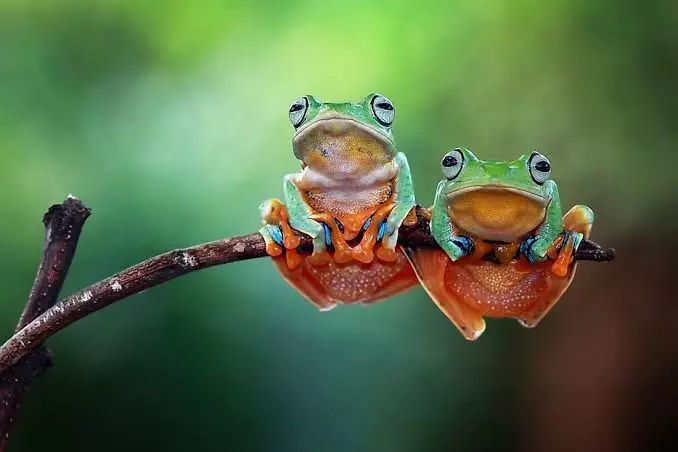Over 40 per cent amphibians face extinction threat due to climate change, habitat loss: study
Amphibians are small-size vertebrates, which require water or a moist environment for survival
By Sulogna Mehta
Representational Image
Hyderabad: Amphibians are the most threatened vertebrates in the world at present, with over 40 per cent of all assessed species in danger of going extinct, as per a recently published scientific report.
These numbers were found by a global team of experts on amphibians who published the second Global Amphibian Assessment (GAA-2) report in the journal Nature, titled ‘Ongoing Declines for the World’s Amphibians in the Face of Emerging Threats.’
Dr Karthikeyan Vasudevan from the Council of Scientific & Industrial Research-Centre for Cellular and Molecular Biology (CSIR-CCMB) is a member of the team.
Over 8,000 amphibian species in IUCN Red List
Amphibians are small-size vertebrates, which require water or a moist environment for survival. Some of the species include frogs, toads, salamanders, caecilians and neotropics. All of them can breathe and absorb water through their thin skin.
Completed in June 2022, the second Global Amphibian Assessment (GAA-2) reassessed the status of the GAA-1 species and added 2,286 species, bringing the total number of amphibians on the International Union for Conservation of Nature (IUCN) Red List to 8,011 (which is 39.9 per cent increase from 2004 covering 92.9 per cent of 8,615 described species).
The status of amphibians worldwide continues to deteriorate: 40.7 per cent (2,873) are globally threatened (IUCN Red List species categorised as Critically Endangered, Endangered and Vulnerable), compared to 37.9 per cent (2,681) in 1980 and 39.4 per cent (2,788) in 2004.
The IUCN Red List Index (RLI) documents the extinction risk trends of species groups over time, generating information that is crucial for conservation prioritization and planning. The landmark 2004 Global Amphibian Assessment (GAA-1) was published on the IUCN Red List, demonstrating that amphibians were the most threatened class of vertebrates worldwide, and has been widely used to guide and motivate amphibian conservation efforts.
Significance of the study
Systematic assessments of species extinction risk at regular intervals are necessary for informing conservation action. Ongoing developments in taxonomy, threatening processes and research further underscore the need for reassessment.
“The second Global Amphibian Assessment, evaluating 8,011 species for the IUCN Red List of threatened species. We find that amphibians are the most threatened vertebrate class (40.7 per cent of species are globally threatened). The updated Red List Index shows that the status of amphibians is deteriorating globally, particularly for salamanders and in the Neotropics,” said the authors of the study.
Human activities are major influence
The report highlights that amphibians are the most threatened vertebrates in the world now, with over 40 per cent of all species facing threats of extinction, out of 8,011 species assessed so far. The study shows that their status is deteriorating globally.
The scientists found that between 1980 and 2004, disease and habitat loss were the reasons for putting 91 per cent of the amphibian species studied to threat. From 2004 to 2023, ongoing and projected climate change effects are now of increasing concern, driving 39 per cent of status deterioration since 2004, followed by habitat loss (37 per cent).
The reasons for their habitat loss or degradation include agricultural activities, mining and energy production, infrastructure development, human disturbance, timber and plant harvesting, anthropogenic fire, water management, pollution, geological events etc. Other main causes are over-exploitation, toxic chemicals in fertilisers and pesticides, effects of climate change.
India ranks 6th in global diversity of amphibians
This study is of particular interest to India since the country ranks sixth in the world for the diversity of amphibians. It houses nearly 70 per cent of all species found nowhere else in the world. It also has 41 per cent of threatened species and it is among the top three countries in the Indo-Malayan region for threatened amphibians. Nearly all of them face threats due to habitat loss.
“A disease caused by a fungal pathogen as well as climate change has been recognised to cause deterioration of status in 60 per cent of the threatened species. Due to the growing pet trade and wildlife trade, the pathogen moves globally, causing problems for local amphibian populations. In April 2023, CSIR-CCMB developed a novel non-invasive diagnostic technique for detecting the fungal pathogen that is now being offered in the Institute’s wildlife diagnostics service,” said Dr Vasudevan.